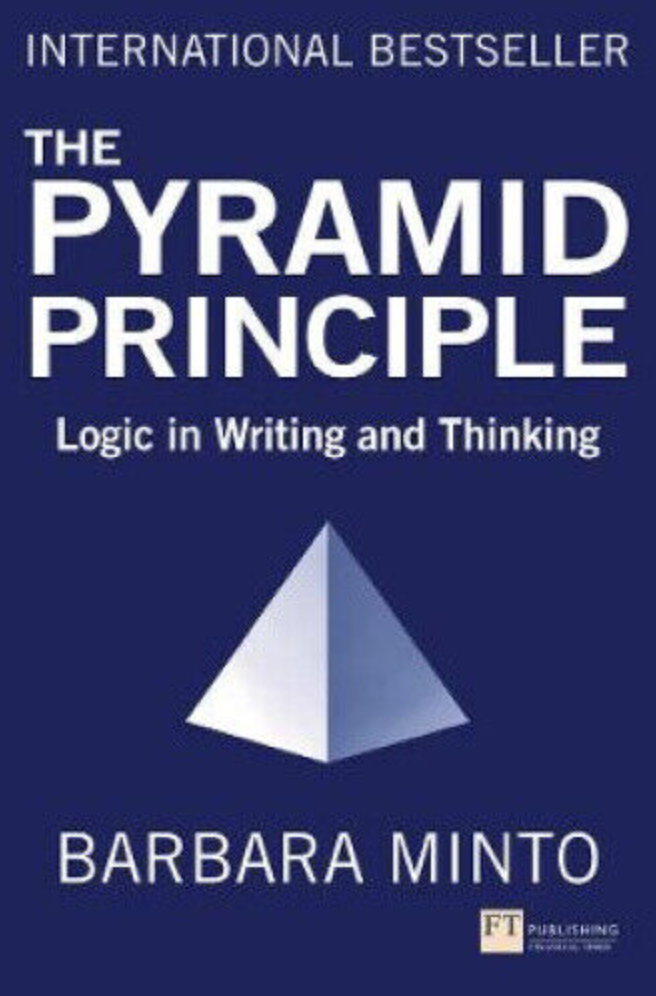- Tags:: 📚Books , Writing tips
- Author:: Barbara Minto
- Liked:: 8
- Link:: https://www.amazon.com/Pyramid-Principle-Logic-Writing-Thinking/dp/0273710516
- Source date:: 2010-01-01
- Finished date:: 2022-08-01
- Cover::

Why did I want to read it?
I discovered it because of a brown bag talk in Nextail, and covers one of my favorite topics: how to structure your writing, and thus, your thinking (Writing is thinking).
What did I get out of it?
OMG, she invented MECE (mutually exclusive, collectively exhaustive)!. See Barbara Minto: “MECE: I invented it, so I get to say how to pronounce it” | McKinsey & Company.
1. Why a pyramid structure?

The clearest sequence is always to give the summarizing idea before you give the individual ideas being summarized (…) he will assume that those ideas that appear together logically belong together. If you do not tell him in advance what the relationship is, but simply give the ideas one at a time, he will automatically look for similarities by which he can group the points being expressed. (p. 9)
A shortcut in checking your groupings is to be sure that you can clearly label the ideas with a plural noun. (p. 16)
Ideas in each grouping must always be logically ordered (…) there are only four possible logical ways in which to order a set of ideas:
- Deductively (major premise, minor premise, conclusion).
- Chronologically (first, second, third).
- Structurally (Boston, New York, Washington).
- Comparatively (first most important, second most important, etc.) The order you choose reflects the analytical process you used to form the grouping. (p. 16)
2. Substructures within the pyramid
The vertical relationship
You state facts that raise questions to the reader (such as “why”), answer them in the next line, raising another question… until you exhaust depth-first that branch.
The horizontal relationship
A deduction or an induction links the statements horizontally.
The introductory flow
…you make sure your document is of interest by directing it toward answering a question that already exists in the reader’s mind, or that would exist if he thought for a minute about what is going on around him. The introduction identifies that question by tracing the history of its origin.
Since this history will be in the form of a narrative of events, it should follow the classic narrative pattern of development. That is, it should begin by establishing for the reader the time and place of a Situation. In that Situation something will have occurred (known as the Complication) that caused him to raise (or would cause him to raise) the Question to which your document will give him the Answer. (p. 27)